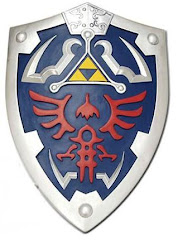
Halloween's origins date back to "the ancient Celtic festival of Samhain",which means summer's end. Roughly 2,000 years ago, a people known as the Celts lived in the area now divided among three modern-day countries: the United Kingdom, Northern France, and Ireland. The Celts began their new year on November 1, meaning October 31 was their New Year's Eve, and the time, they believed, when the dead came back to roam the earth. Evil spirits were warded off by lighting bonfires and wearing costumes to hide from them. According the History Channel, "the boundary between the worlds of the living and the dead became blurred" that night. Turnips carved with faces got placed in windows to scare off the unwelcome undead. People would go "a-souling," and in exchange for food and drink, pray for a household's dead relatives. In Scotland, spirits were impersonated by men wearing all white with veiled faces. Bonfires and animal sacrifices were common, as were costumes "typically consisting of animal heads and skins." Eventually, the Romans conquered the Celts, and Samhain was combined with other holidays. Later, as Christianity became more powerful, Pope Boniface IV put a new tilt on the event. He designated November 1 "All Saints' Day" -- a day when followers could honor saints and martyrs.
The Celtic holiday of Samhain, the Catholic Hallowmas, also called "All-Hallows". period of All Saints' Day and All Souls' Day and the Roman festival of Feralia all influenced the modern holiday of Halloween. In the 19th century, Halloween began to lose its religious connotation, becoming a more secular community-based children's holiday. Although the superstitions and beliefs surrounding Halloween may have evolved over the years, as the days grow shorter and the nights get colder, people can still look forward to parades, costumes and sweet treats to usher in the winter season.
These days, Halloween is mostly known as a day when kids throw dental hygiene out the window and go hog-wild with candy. The origin of trick-or-treating is somewhat disputed. In the second half of the nineteenth century, America was flooded with new immigrants. These new immigrants, especially the millions of Irish fleeing Ireland's potato famine of 1846, helped to popularize the celebration of Halloween nationally. Taking from Irish and English traditions, Americans began to dress up in costumes and go house to house asking for food or money, a practice that eventually became today's "trick-or-treat" tradition. Young women believed that, on Halloween, they could divine the name or appearance of their future husband by doing tricks with yarn, apple parings, or mirrors. Today, Americans spend an estimated $6.9 billion annually on Halloween, making it the country's second largest commercial holiday.
(History Channel) http://www.history.com/topics/halloween
The First Jack O'Lantern
The Irish carved Turnips and put coals or small candles inside. They were placed outside their homes on All Hallow's Eve to ward off evil spirits. They were also known to use potatoes and Rutabagas. When Irish Immigrants came to America, they quickly discovered that Jack O'Lanterns were much easier to carve out and began using them. This truly neat tradition quickly spread to the general population in America and elsewhere. Others believe that the first Jack O'Lanterns came from the Story of Stingy Jack. http://www.history.com/topics/jack-olantern-history
Dia De Los Muertos
In English, this holiday translates to "The Day of the Dead". It is an important Mexican holiday. Where Americans shy away from the topic of death, Mexicans embrace it. On this day, they celebrate it in a big way. Asian cultures are also known to honor the dead in October.












No comments:
Post a Comment